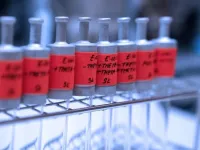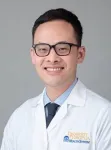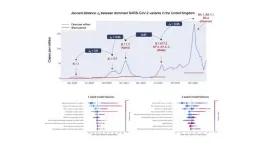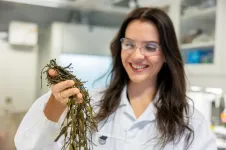(Press-News.org) Synthetic biology offers the opportunity to build biochemical pathways for the capture and conversion of carbon dioxide (CO2). Researchers at the Max-Planck-Institute for Terrestrial Microbiology have developed a synthetic biochemical cycle that directly converts CO2 into the central building block Acetyl-CoA. The researchers were able to implement each of the three cycle modules in the bacterium E.coli, which represents a major step towards realizing synthetic CO2 fixing pathways within the context of living cells.
Developing new ways for the capture and conversion of CO2 is key to tackle the climate emergency. Synthetic biology opens avenues for designing new-to-nature CO2-fixation pathways that capture CO2 more efficiently than those developed by nature. However, realizing those new-to-nature pathways in different in vitro and in vivo systems is still a fundamental challenge. Now, researchers in Tobias Erb's group have designed and constructed a new synthetic CO2-fixation pathway, the so-called THETA cycle. It contains several central metabolites as intermediates, and with the central building block, acetyl-CoA, as its output. This characteristic makes it possible to be divided into modules and integrated into the central metabolism of E. coli.
The entire THETA cycle involves 17 biocatalysts, and was designed around the two fastest CO2-fixing enzymes known to date: crotonyl-CoA carboxylase/reductase and phosphoenolpyruvate carboxylase. The researchers found these powerful biocatalysts in bacteria. Although each of the carboxylases can capture CO2 more than 10 times faster than RubisCO, the CO2-fixing enzyme in chloroplasts, evolution itself has not brought these capable enzymes together in natural photosynthesis.
The THETA cycle converts two CO2 molecules into one acetyl-CoA in one cycle. Acetyl-CoA is a central metabolite in almost all cellular metabolism and serves as the building block for a wide array of vital biomolecules, including biofuels, biomaterials, and pharmaceuticals, making it a compound of great interest in biotechnological applications. Upon constructing the cycle in test tubes, the researchers could confirm its functionality. Then the training began: through rational and machine learning-guided optimization over several rounds of experiments, the team was able to improve the acetyl-CoA yield by a factor of 100. In order to test its in vivo feasibility, incorporation into the living cell should be carried out step by step. To this end, the researchers divided the THETA cycle into three modules, each of which was successfully implemented into the bacterium E. coli. The functionality of these modules was verified through growth-coupled selection and/or isotopic labelling.
"What is special about this cycle is that it contains several intermediates that serve as central metabolites in the bacterium's metabolism. This overlap offers the opportunity to develop a modular approach for its implementation.” explains Shanshan Luo, lead author of the study. “We were able to demonstrate the functionality of the three individual modules in E. coli. However, we have not yet succeeded in closing the entire cycle so that E. coli can grow completely with CO2," she adds. Closing the THETA cycle is still a major challenge, as all of the 17 reactions need to be synchronized with the natural metabolism of E. coli, which naturally involves hundreds to thousands of reactions. However, demonstrating the whole cycle in vivo is not the only goal, the researcher emphasizes. "Our cycle has the potential to become a versatile platform for producing valuable compounds directly from CO2 through extending its output molecule, acetyl-CoA." says Shanshan Luo.
“Bringing parts of the THETA cycle into living cells is an important proof-of-principle for synthetic biology”, adds Tobias Erb. “Such modular implementation of this cycle in E. coli paves the way to the realization of highly complex, orthogonal new-to-nature CO2-fixation pathways in cell factories. We are learning to completely reprogram the cellular metabolism to create a synthetic autotrophic operating system for the cell."
END
First step towards synthetic CO2 fixation in living cells
Three modules forming a new-to-nature CO2 fixation cycle successfully implemented in E.coli
2024-01-02
ELSE PRESS RELEASES FROM THIS DATE:
Continuous glucose monitoring
2024-01-02
Monitoring glucose levels is one of the key elements in health monitoring. A research team has now developed a battery-independent fluorescent nanosensor based on single-wall carbon nanotubes and an inactive form of the enzyme glucose oxidase (GOx). Because the enzyme is not in its active form, the analyte is not consumed during the measurement, and continuous, reversible, and non-invasive bioimaging of glucose levels in body fluids and tissues is possible, the team reports in the journal Angewandte Chemie.
Blood glucose levels are typically measured using GOx-based electrochemical sensors. However, these sensors ...
Researchers receive USDA grant to study changing food spending patterns
2024-01-02
After a long day, there’s the age-old question of do we eat out or stay in?
Over the last decade, that answer has increasingly shifted to eating out.
In that timeframe, households have increasingly spent more money on food outside of the home than what's spent on eating at home. In that same time, the farmer’s share of the food dollar eaten outside of the home has declined while the share of food eaten at home has increased.
With a more than $550,000 grant from the National Institute of Food and Agriculture, researchers George Davis and Anubhab Gupta, in the Department of Agricultural and Applied Economics in Virginia Tech's College ...
High adolescent BMI increases risk of early chronic kidney disease, according to JAMA study by Hebrew University researchers
2024-01-02
New study finds that adolescent obesity significantly heightens the risk of developing early chronic kidney disease in young adulthood. Even those with high-normal BMI are at risk. Severe obesity poses the highest risk, but even mild obesity and being overweight contribute significantly to this increased risk for both males and females. Lowering obesity rates in adolescents is crucial to better managing the risk of kidney disease and subsequent cardiovascular issues. This study emphasizes the need for preventive measures and management of risk factors associated with chronic kidney disease ...
Healthy omega-3 fats may slow deadly pulmonary fibrosis, research suggests
2024-01-02
Could healthy fats found in nuts and fish slow the progression of potentially deadly lung scarring known as pulmonary fibrosis and delay the need for lung transplants?
UVA pulmonary researchers looked at the association between blood-plasma levels of omega-3 fatty acids – the heart-healthy fats found in foods such as salmon and flaxseeds – and the progression of pulmonary fibrosis, as well as how long patients could go without needing a transplant. The researchers found that higher levels of omega-3 were associated with better lung function and longer transplant-free survival.
While more research ...
Predicting COVID-19 variant waves with AI
2024-01-02
An AI model can predict which SARS-CoV-2 variants are likely to cause new waves of infection. Current models used to predict the dynamics of viral transmission do not predict variant-specific spread. Retsef Levi and colleagues studied what factors could shape the viral spread based on analysis of 9 million SARS-CoV-2 genetic sequences collected by the Global Initiative on Sharing Avian Influenza Data (GISAID) from 30 countries, along with data on vaccination rates, infection rates, and other factors. The patterns that emerged from this analysis ...
Cultivated kelp can now be as good as wild kelp
2024-01-02
Norway’s exports products derived from from tangle kelp (Laminoria hyperborea) and knotted kelp (Ascophyllum nodosu) to the tune of more than NOK 1 billion a year. The industry mainly extracts alginate from kelp, which is used in over 600 different products as diverse as paint, soft serve ice cream, sauces, bandages, nappies, acid reflux medicine and material for encapsulating cells and medicine. However, the market is far from saturated.
“Alginate is becoming a scarce commodity on the global market. There are great opportunities here if we could cultivate more kelp that yielded alginate of good enough quality,” says Finn Aachmann, a professor at the Norwegian ...
Researchers identify new coding mechanism that transfers information from perception to memory
2024-01-02
Our memories are rich in detail: we can vividly recall the color of our home, the layout of our kitchen, or the front of our favorite café. How the brain encodes this information has long puzzled neuroscientists.
In a new Dartmouth-led study, researchers identified a neural coding mechanism that allows the transfer of information back and forth between perceptual regions to memory areas of the brain. The results are published in Nature Neuroscience.
Prior to this work, the classic understanding of brain organization was that perceptual regions of the brain represent the world "as it is," with the ...
A novel switch to turn genes on/off on cue, a promising step toward safer gene therapy
2024-01-02
Just like a doctor adjusts the dose of a medication to the patient’s needs, the expression of therapeutic genes, those modified in a person to treat or cure a disease via gene therapy, also needs to be maintained within a therapeutic window. Staying within the therapeutic window is important as too much of the protein could be toxic, and too little could result in a small or no therapeutic effect.
Although the principle of therapeutic window has been known for a long time, there has been no strategy to implement it safely, limiting the potential applications of gene therapy in the clinic. ...
Food insecurity among low-income adults dropped nearly 5% during pandemic-era SNAP expansion
2024-01-01
Embargoed for release until 5:00 p.m. ET on Monday 1 January 2024
Annals of Internal Medicine Tip Sheet
@Annalsofim
Below please find summaries of new articles that will be published in the next issue of Annals of Internal Medicine. The summaries are not intended to substitute for the full articles as a source of information. This information is under strict embargo and by taking it into possession, media representatives are committing to the terms of the embargo not only ...
A tidy cell seems to keep aging at bay
2024-01-01
Osaka, Japan – Just as healthy organs are vital to our well-being, healthy organelles are vital to the proper functioning of the cell. These subcellular structures carry out specific jobs within the cell, for example, mitochondria power the cell and lysosomes keep the cell tidy.
Although damage to these two organelles has been linked to aging, cellular senescence, and many diseases, the regulation and maintenance of these organelles has remained poorly understood. Now, researchers at Osaka University have identified a protein, HKDC1, that plays a key role in maintaining these two organelles, thereby acting to prevent ...
LAST 30 PRESS RELEASES:
Scientists trace microplastics in fertilizer from fields to the beach
The Lancet Obstetrics, Gynecology, & Women’s Health: Taking paracetamol during pregnancy does not increase risk of autism, ADHD or intellectual disabilities, confirms new gold-standard evidence review
Taking paracetamol during pregnancy does not increase risk of autism, ADHD or intellectual disabilities
Harm reduction vending machines in New York State expand access to overdose treatment and drug test strips, UB studies confirm
University of Phoenix releases white paper on Credit for Prior Learning as a catalyst for internal mobility and retention
Canada losing track of salmon health as climate and industrial threats mount
Molecular sieve-confined Pt-FeOx catalysts achieve highly efficient reversible hydrogen cycle of methylcyclohexane-toluene
Investment in farm productivity tools key to reducing greenhouse gas
New review highlights electrochemical pathways to recover uranium from wastewater and seawater
Hidden pollutants in shale gas development raise environmental concerns, new review finds
Discarded cigarette butts transformed into high performance energy storage materials
Researchers highlight role of alternative RNA splicing in schizophrenia
NTU Singapore scientists find new way to disarm antibiotic-resistant bacteria and restore healing in chronic wounds
Research suggests nationwide racial bias in media reporting on gun violence
Revealing the cell’s nanocourier at work
Health impacts of nursing home staffing
Public views about opioid overdose and people with opioid use disorder
Age-related changes in sperm DNA may play a role in autism risk
Ambitious model fails to explain near-death experiences, experts say
Multifaceted effects of inward foreign direct investment on new venture creation
Exploring mutations that spontaneously switch on a key brain cell receptor
Two-step genome editing enables the creation of full-length humanized mouse models
Pusan National University researchers develop light-activated tissue adhesive patch for rapid, watertight neurosurgical sealing
Study finds so-called super agers tend to have at least two key genetic advantages
Brain stimulation device cleared for ADHD in the US is overall safe but ineffective
Scientists discover natural ‘brake’ that could stop harmful inflammation
Tougher solid electrolyte advances long-sought lithium metal batteries
Experts provide policy roadmap to reduce dementia risk
New 3D imaging system could address limitations of MRI, CT and ultrasound
First-in-human drug trial lowers high blood fats
[Press-News.org] First step towards synthetic CO2 fixation in living cellsThree modules forming a new-to-nature CO2 fixation cycle successfully implemented in E.coli





